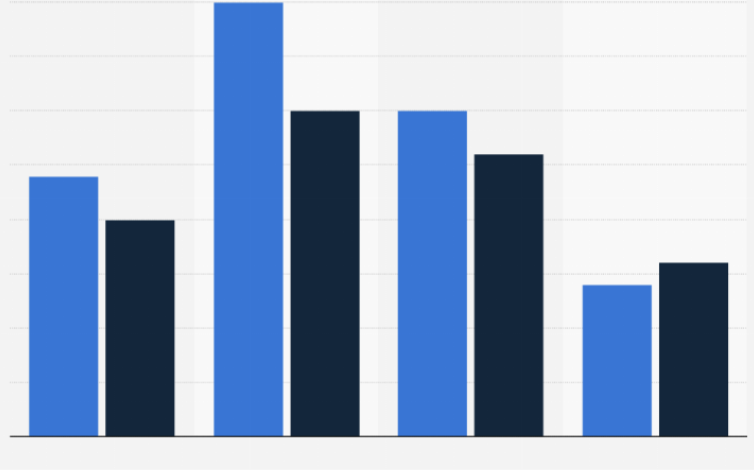Before getting to the heart of the matter, I think it is right to thank the kind provider of the data that we will deal with today.
Limelight Networks, Inc. is a leader in providing digital content, video, cloud security, and edge computing services, enabling customers to enjoy exceptional digital experiences. Limelight’s service platform includes a unique combination of global private infrastructure, intelligent software and expert support services that enable current and future workflows. Here is the official website of the company!
In this article, I collected the most interesting information from this research, as I did with a very interesting research from Microsoft, which aimed to understand how popular the video game has become in various European countries.

But how much do these gamers play!
Globally, consumers are binge-gaming more and more, with a 7% increase compared to 2019 and with an average of four consecutive hours and 36 minutes. This, according to the recent “State of Online Gaming” report analyzing gaming behaviors and consumer expectations, released by Limelight Networks Inc.
The spread of binge-gaming is predictably higher among younger gamers. According to the report, gamers between the ages of 18 and 25 have gaming sessions that even exceed an average of six hours and 34 minutes, 11% more than a year ago. Japan has the longest average binge-gaming time, with over five and a half hours, and nearly one in ten players (9%) admit playing more than 15 straight hours.
Although the report shows that, globally, gamers spend less time playing video games each week than last year – on average six hours and 20 minutes – their longer binge-gaming sessions can in part be attributed to the spread. anywhere, anytime gaming. Globally, the smartphone is the leading gaming device for gamers around the world, and the preference for smartphone gaming has increased by 13% compared to 2019.
After the smartphone, Italian gamers prefer to play on PC and consoles, although this year’s research has identified a strong global interest in cloud gaming services, with 44% of respondents saying they are interested in subscribe to these services. India is the country that has expressed the highest interest in subscribing to cloud gaming services (83%).
Other interesting insights that emerged from the research include:
- The price and performance could limit the adoption of streaming services. Interest in new console-free gaming platforms is particularly high (71%) among those who define themselves as experts and (77%) among aspiring professional gamers. However, 51.2% of Italian gamers would not be interested in streaming, expressing concerns about the high price (54.3%) and performance problems such as latency (24.2%).
- Watching others play video games increases the popularity of younger gamers, sparking the desire to become professionals. Gamers aged 18-25 watch others play video games online (via platforms like Twitch or YouTube Gaming) for more than four hours each week and are the most likely to want to turn this hobby into a profession (53%). In Italy, 43.6% of gamers would quit their jobs to become a professional gamer if this could keep them.
- Gamers prefer to play games than do a lot of daily activities. Almost half of Italian gamers (45.8%) did not sleep to continue playing. Many Italian consumers also skipped work (6.6%), meals (6.6%) and showers (19.8%). Globally, younger gamers are the most likely to skip meals (39%) or shower (35%) to keep playing. Given these, quite worrying ..
- Download speed is the biggest frustration, especially for hardcore gamers. Globally, the vast majority of gamers (87%) find the game download process frustrating. 17.3% of Italian gamers indicate slow download speeds as their main concern, 36.1% are frustrated when downloads are interrupted and have to start over and 33.3% when downloads don’t work. Globally, download speed frustrations are highest among experienced gamers (41%) and aspiring professionals (58%).
- Globally, casual single player games like Candy Crush, Angry Birds and Spider Solitaire are the most popular, and first person shooter games like Call of Duty, Destiny 2 and Overwatch are the second most popular video game type and are increased in popularity by over 6% in the past year.
- Online video games continue to be popular. On average, gamers spend six hours and 20 minutes each week playing games. However, this is an 11% reduction in playing time over the past year.
- It is very difficult to pinpoint the general preference between playing video games and watching TV or movies in most countries, but there is a clear preference for age groups. Gamers aged 18 to 45 prefer to play video games while those aged 46 prefer to watch movies and TV shows.
Here are some more precise numbers!
Let’s look at the numbers specifically: as already mentioned above, gamers spend an average of six hours and 20 minutes each week playing. A figure that has received an 11% decrease in the last year. Almost a third (32%) play more than seven hours a week, while 17% play more than 12 hours a week.
Players in Germany spend most of their time playing, on average nearly seven hours a week. South Korea recorded the lowest weekly average at 5.04 hours, surprising when you keep in mind how often Koreans are often regarded as the lords of farming. Japan and the UK had the highest numbers of players playing more than 20 hours per week at 12% and 10% respectively.

Gamers between the ages of 26 and 35 are the ones who spend the most time playing, with 7.5 hours per week. The over 60s are as expected at the bottom, with “only” 4.7 hours of play. The global data is interesting, considering all ages, with a rather high average of 6.33 hours per week!
Men play almost seven hours a week. This is on average an hour and two minutes longer than women, who play 5.80 hours. 19.6 percent of men play for 12 hours or more, compared to just 14.4 percent of women.
It should come as no surprise that players who identify as aspiring pros or experts reach a much higher hourly quota per week, while most casual and novice players play less than seven hours per week.
Everyone always talks about it badly, but it is the most used gaming device!
Mobile phones remain the most popular device used to play video games globally. Gaming consoles have the highest usage in the UK, tablets are used more in India than any other country, and Italy has the highest computer usage.
Mobile phones are the most popular devices in every age group followed by computers. Gaming consoles are most popular among the hardcore gamers who play the most, namely the 26 to 35.
Women are more likely to use mobile phones for gaming than men, while men use computers and consoles more than women.